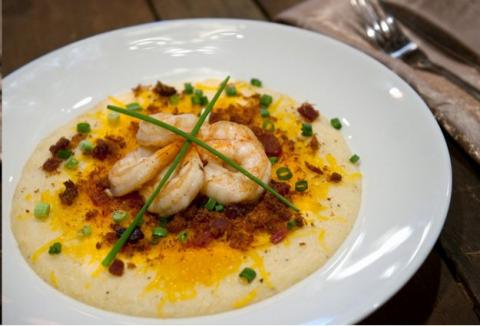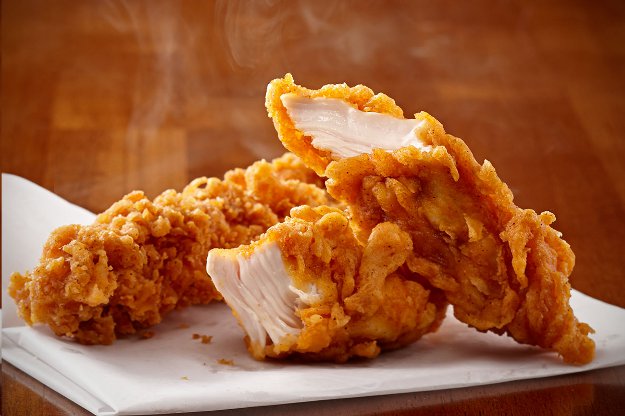Why Southern Food Hits the Spot

Note: I participated in an educational journey through the South in October 2014. The trip from New Orleans through the Mississippi Delta was sponsored by the Yiddish Book Center and part of the Tent program. That’s how I got to Memphis and deep into a plate of Gus’s fried chicken.
A Lush Land of Struggle
If you weren’t aware of how largely food is a part of Southern culture, these songs will tell ya. Tim O’Brien’s “Cornbread Nation” (2005) and Big Bill Morganfield’s “No Butter for My Grits” (2013) are just a couple examples that show the influence of Southern food through song.
The South is an area known for its struggles and its dichotomies - its lush landscape saw slavery tarnish its beauty. The South is a place with a rich array of luscious and hearty foods, but it’s also a place where food and place have been completely intertwined.
Of course slavery serves as the ultimate example of Southern struggle and contradiction. According to PBS, corn was grown on the larger plantations, while smaller ones stuck to the profitable cotton crop. It was grown by slaves to make up most of their diet.
The famous incidences at lunch counters and restaurants in the Civil Rights Movement stand clearly in the minds of many Southerners. The photos are ingrained in the memories of most Americans. “Segregation academies” are still rampant in the Mississippi Delta, in towns like Indianola, one of President Obama’s “Promise Communities.”
While corn fields are plentiful and prosperous for big companies in Mississippi, the state has a 22.7 percent poverty rate, the highest in America. It was the only state in the union in which the percentage of uninsured citizens rose during the first year of Obamacare, according to Kaiser Health News.
While some may point to butter, cream and carbs as a pinpoint for Southern health struggles, there are certainly more layers involved. Also, the South is more than just butter and barbecue. Its foods reflect a richness of flavor, diversity and history.

Why does it all taste so good?
The stereotype against Southern food is that it’s all laden with butter and cream and deep-fried. Paula Deen’s cooking shows have certainly spread that conception. However, there are many layers of flavor and spices that go into classic Southern cooking, including specific techniques that add complexity to Southern dishes.
In addition, not everything is fried. Roasting and barbecuing meats is of course widely celebrated. Seafood boils bring out the best flavors of all ingredients in a slow-cooking process. Southern cuisine itself also includes a variety of veggies, pickles and corn - so it’s not all meat and butter. And who can forget the classic New Orleans Bloody Mary, offering an entire salad of delicious veggies?
Roux
A roux is the base for soups, stews and sauces. A combination of equal parts oil and flour, a roux must never be left alone as it cooks. Cooking this seemingly simple two-ingredient combination is nothing simple - a skilled hand knows a roux left on too long will burn and be useless. Since it continues to cook after it’s removed from the heat, constant monitoring until the very last second is mandatory. Its richness lends flavor and color to foods like gumbo and etoufee. Gravy is created using the roux method.
Holy Trinity
The holy trinity is a mix of bell peppers, onions and celery used as a base for dishes like gumbo, jambalaya and etoufee. The term references the Trinity doctrine in Christianity.
Old Bay
Used widely to season seafood, Old Bay is also used to season French fries, fried chicken and corn. The spice has been around for 75 years.

Fried...everything?
How did the idea to deep-fry chicken, fish, turkeys, and basically anything else, come to exist in the South?
In the 16th century, tempura was being made in Japan. By the 1830s France and Belgium were enjoying fried potatoes. KFC started in 1890 as a roadside restaurant in Corbin, Kentucky. Our lives were forever changed. (Its headquarters is now in Louisville.)
Deep-fried turkeys started in Louisiana in the 1930s, and the trend has moved north since then. Now deep fryers are easy to find, and fried turkey is a longstanding American tradition.
Corn
Corn is the ultimate staple in the American diet - especially in Southern food. Cornbread, grits, hushpuppies and bourbon all exemplify the use of corn in the South. Any good crab boil has sweet ears of corn thrown in to absorb all the spices and serve as a sweet part of the flavor experience.
Ribs/Pulled Pork/Ham/Bacon
You’ll notice there isn’t a lot of beef involved in Southern cooking, but pig is king. When it comes to barbecue, it not only differs by region, but it’s about who does it best.
George Washington wrote about a barbecue in his diary in May 1769, where it’s likely he feasted on a whole hog. Today, there are at least 500 BBQ cookoffs yearly in the U.S.

Collard Greens
Cooking vegetables with diced meat is a longstanding Southern style. Using leftover meat bits or fat is an economical way to add a ton of flavor to vegetables, especially greens. Collard greens cooked with ham and splashed with vinegar are simple but complex in taste.
Okra
Okra is often used to thicken soups and stews, especially gumbo. It’s also enjoyed deep fried or pickled. The plant is rich in dietary fiber, folates and vitamins.
Sweet Tea
Sweet tea, used as a way to showcase wealth in the 1900s, is now on most Southern tables. For the non-Southern palate, it may seem, well, quite sweet. But give it a few days and you’ll love a glass with both lunch and dinner.
Buttermilk
Buttermilk is a drink used as a probiotic, said to settle the stomach and provide vitamins, potassium and calcium. It is said to improve immunity when taken regularly.
Pride and Tradition
Fried green tomatoes, biscuits and gravy, blackeyed peas, collard greens, boiled peanuts. The list of Southern fare goes on and on, and the deliciousness never ends.
Though some may criticize Southern cuisine for its lax attitude towards fat and carbs, saying Southerners are proud of their cuisine is the understatement of the century. The food reflects the love they have for their region. It shows respect toward their ancestors and pride in their heritage. Part of the reason outsiders love it so much is because of the love that goes into making it. Not only does it taste good, but a real Southern meal shines with Southern hospitality.
Author Bio:
Beth Kaiserman is Highbrow Magazine’s chief food critic.






























































































































































































































































































































